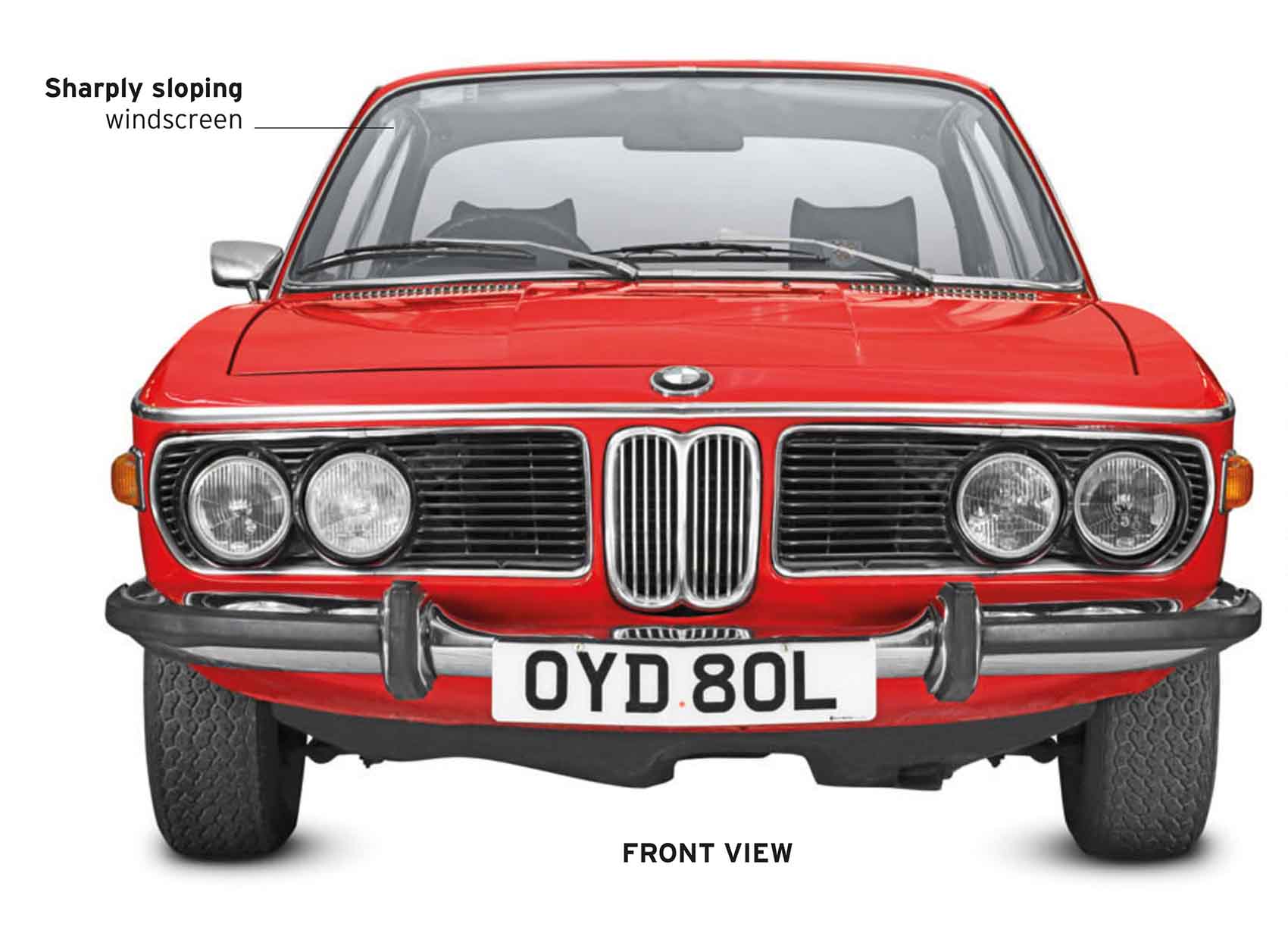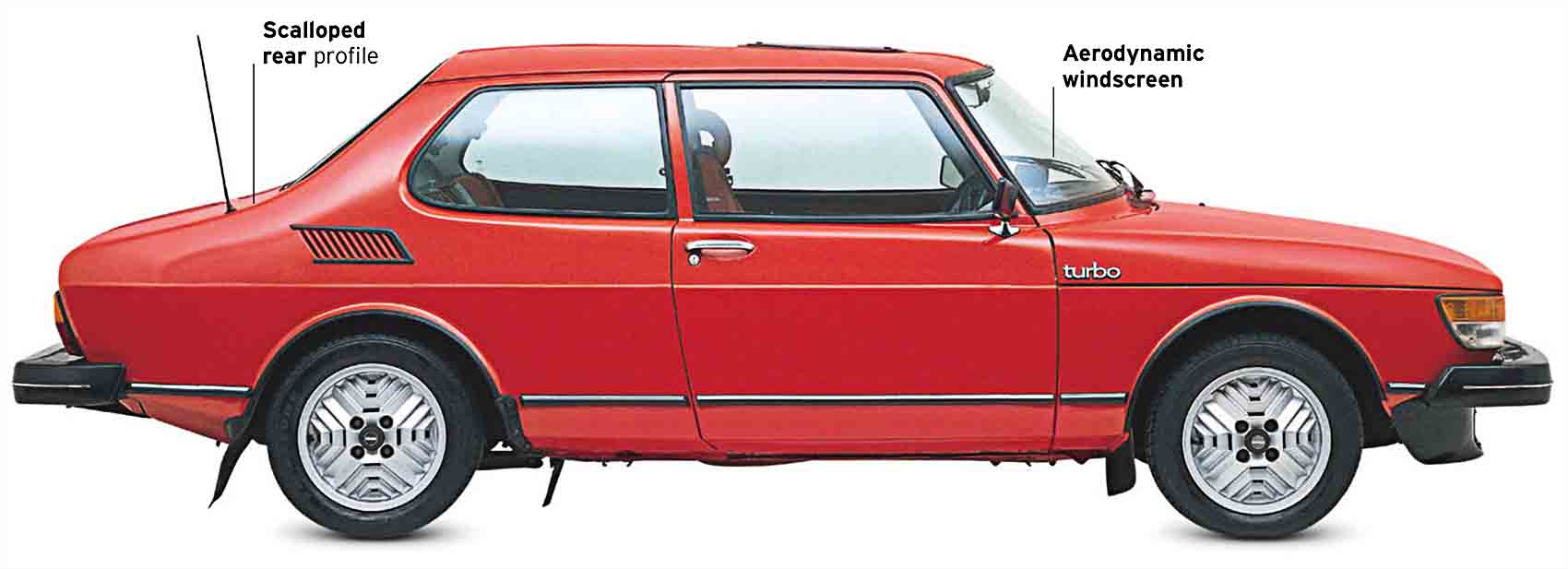
High-Performance Saloons
Premium saloons were offering all sorts of routes to performance and panache. The old-school method was to drop a big, lazy V8 into a medium-sized body. This was the path taken by Mercedes in Germany and Rover in the UK. Other car-makers went for smaller motors but added sophistication: fuel injection was one method of improving efficiency, while multi-valve cylinder heads would emerge as a common route to better breathing and more power. Another introduction was turbocharging, which hit the mainstream with Saab in 1978 and would soon spread across the motor industry.
BMW 3.0 CSI, 1972

| Origin | Germany |
| Engine | 2,985 cc, straight-six |
| Top speed | 130 mph (209 km/h) |
BMW lengthened its four-cylinder 2000 C/CS coupé to make space for the “Big Six” engine, and ended up with an all-time classic. Originally it was a 2.8-liter, but this definitive fuel-injected 3.0 CSi came in 1971. It led to the lightweight 3.0 CSL of 1972, which proved effective in touring-car racing.

Special build
All BMW’s six-cylinder coupes were built under contract by German coach builder, Karmann, of Osnabruck. The same basic shell was used for the spectacular CSL racing cars, albeit with aluminum bonnet, boot lid, and doors.

Big Six
The CSI’s superb six-cylinder engine offered an energetic 200 bhp, thanks to Bosch fuel injection; the non-injected CS sister model had 180 bhp. The long-legged nature of the car made it an accomplished long-distance tourer, and many were sold as automatics.

Sport and sophistication
The CSI had sports seats and a three-spoke sports steering wheel, and power steering was standard—the car’s only concession to driver ease. This was a taut, fine-handling car to relish driving along highways or twisty roads.
Triumph Dolomite Sprint, 1973

| Origin | UK |
| Engine | 1,998 cc, straight-four |
| Top speed | 115 mph (185 km/h) |
Triumph built innovative cars with attractive styling on a tight budget. The Dolomite’s shape was ageing by the early 1970s but the Sprint gave the car a new lease of life. Its clever 16-valve engine—one of the first in series production—gave it performance to challenge BMW’s 2002 series.
Citroen CX2400, 1974

| Origin | France |
| Engine | 2,347 cc, straight-four |
| Top speed | 113 mph (182 km/h) |
The Citroen DS’s successor combined all its predecessor’s innovation with a transverse engine for increased passenger space. Inside, it was as quirky as cars come, with revolving drum instruments and minor controls on pods either side of the steering wheel. Facelifted in 1985, it stayed in production until 1989.
Rover 3500 SD1, 1976

| Origin | UK |
| Engine | 3,528 cc, V8 |
| Top speed | 125 mph (201 km/h) |
Despite its advanced looks, high specification, and excellent dynamics, the SD1 rapidly gained a reputation for poor quality in the 1970s. Racing victory bolstered its image. Upgraded and relaunched as the Vitesse in 1982, it was driven to victory by Andy Rouse in the 1984 British Saloon Car championship. There were successes in Europe and Australia as well.
Saab 99 Turbo, 1977

| Origin | Sweden |
| Engine | 1,985 cc, straight-four |
| Top speed | 122 mph (196 km/h) |
Developed from the fuel-injected EMS model, the Turbo added a Garrett turbocharger to increase power. A hundred prototypes covered 2.9 million miles (4.7 million km) before Saab was happy with its prodigy. Rare, esoteric, and historically significant, the 99 Turbo is an undisputed classic.
It is a quote. The Classic Car Book – The Definitive Visual History 2016




